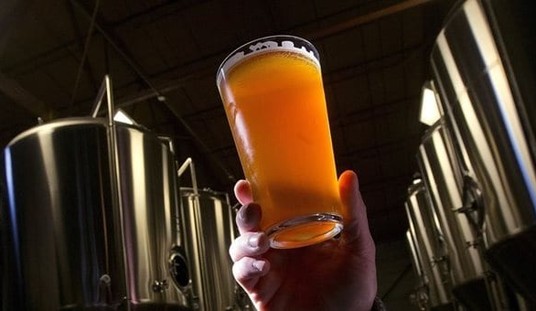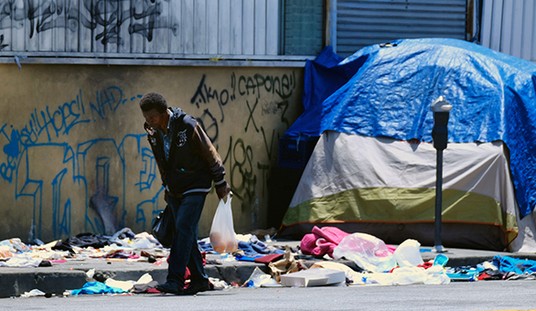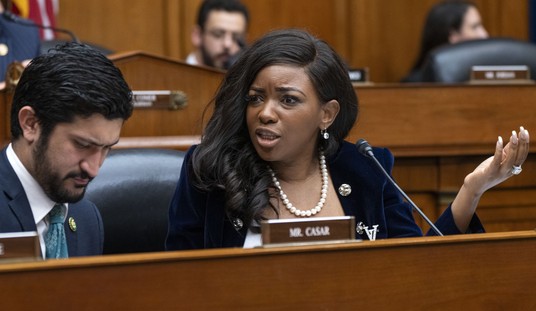Several of America's major cities, bafflingly, are electing "democratic socialist" mayors, and if you want to read that as "communist," well, you'd probably be justified. New York's Zohran Mamdani and now Seattle's Katie Wilson are both creatures of the far left, and both were elected in no small part due to their promises of an endless flow of free taxpayer-funded goodies, even as their proposals will drive any actual taxpayers out of those cities, as sure as the sunrise.
One of the bombastic promises made by both Marxist candidates is free, or at least greatly reduced fare, public transit. In both cities, but more especially New York, the city transit systems are - forgive me - a train wreck. Homeless people and criminals infest them; they are dirty and unsafe.
It wasn't always like that. And what a lot of people may not know is this: The first public transit systems in the United States were mostly built and operated by private companies. A column by Kenneth Schrupp at the Pacific Research Institute has some interesting details.
Visionary developer Henry Huntington, after whom much in the region is named, built a vast public-transit system called the Pacific Electric Railway, which provided electricity and transportation to the then-nonexistent suburbs, often in exchange for real estate. Huntington’s Red Cars connected Los Angeles to San Bernardino in the inland east and Orange County in the coastal south, while his more local Yellow Car system provided last-mile conveyance in the denser core of Los Angeles.
Though Huntington’s actual transit system earned little money, the appreciation of real estate made desirable and useful from the railcars made Huntington one of the wealthiest men in the nation.
There is a present-day model: Japan.
The Land of the Rising Sun's fast, clean, and efficient passenger railways and subway systems are mostly run by private enterprises. Japan Railways (JR) East, JR Central, and JR West are privately owned, publicly traded companies. This includes some of the busiest train services serving the main island of Honshu and the major hubs of Tokyo, Kyoto, and Osaka. These companies also own and operate Japan's famous "bullet trains," the Shinkansen. The Japanese government owns some lower-traffic routes, such as JR Hokkaido, but the majority of Japan's famous train system is run by the private sector.
It's not just the JR system, either. There are several other private train and bus systems, including the Keisei lines that serve Narita International Airport, as well as the Kintetsu and Odakyu systems. This system started in 1987, when the original government-owned Japan Railways Group was disbanded, mostly privatizing the system.
Japan's train and subway systems, I can attest from considerable personal experience, are a joy. Yes, they can be crowded; I've ridden the Tokyo "green" and "blue" lines during the peak commuter hours, and the clips you see of transit workers pushing people into an already-packed passenger car are real. But the trains are clean, well-maintained, safe, and they run on time. On the rare occasions someone acts up on a train, the Japanese people are usually pretty good about handling things themselves - but those incidents are few and far between.
That, not socialist horse squeeze, should be the model for our cities.
Read More: Another One Bites the Dust: Now Seattle Has a Democratic Socialist, Mamdani-Like Mayor
Kathy Hochul May Have Endorsed Mamdani, but She's a Hard No on One of His Key 'Free' Proposals
So what happened with Henry Huntington's system? How did Los Angeles, and for that matter, much of urban America's public transit system, get to the state it's in now?
The Huntington model ended only with the publicly-financed highway system. Federal taxes paid for up to 90% of highway construction, giving cities essentially “free” roads and encouraging them to focus transportation dollars on connecting other places with highways rather than improving non-highway transportation within the city. This vast highway system, designed for defense, could just as easily mobilize wartime resources across the nation as it could affordably allow families from far-flung suburbs to reach job centers.
But with highways at capacity and often with little room for expansion, the Huntington model is already proving resurgent. Look no further than Brightline, the nation’s only privately-owned-and-operated rail line, owned by real estate investment titan Fortress. Its Miami station in its Florida system, for example, includes a 3-million-square-foot mixed-use development. Brightline has lots of passengers — a projected 4.5 million for 2025 — but still loses money on rail, as Huntington’s railways often did.
But, also as with Huntington, it makes a fortune on real estate: according to the University of Florida, properties near where a Brightline station was announced gained immediate price premiums of over 13%, and Brightline’s owners have sold buildings it has developed near stations for billions of dollars.
So, there's hope - in Los Angeles and also in New York:
Even in New York City, which hosts the nation’s most robust public transit system, private transit is finding its way. When Uber started offering a shuttle from Midtown to the airports, it was derided as an unnecessary reinvention of the bus.
However, given the service’s sustained popularity, Uber Shuttle appears to have been a much-desired revitalization of the once-dignified bus — at $24.99 each way, and with only paying riders on board, users can get to the airport and back on the bus, all without having to dodge human excrement and the homeless and mentally ill. This leaves Uber Shuttle as much cheaper than a hundred-dollar taxi ride, while being just one Sweetgreen bowl more expensive than taking public transit.
So what will happen to these systems under what will be essentially a communist city government? We might note that it doesn't stop with New York and Seattle: Los Angeles's Mayor Karen Bass, a creature of the far left herself, may be getting a challenger from the absolute wackadoodle left; My friend and colleague Bob Hoge recently brought us that story.
Under these administrations, under the far-left mindset of "...there is no problem too large for government to solve, and no concern too small for it to care about," will certainly attempt to quash these private-sector enterprises, to regulate and tax them out of existence. Meanwhile, the city transit systems will continue to deteriorate.
Some years ago, I had occasion to ride San Francisco's BART system, from Redwood City to downtown, where I intended to visit the Embarcadero and other notable spots. This was after considerable experience with the Japanese systems, and indeed, the two systems, superficially, seem very similar. But the BART - at least, on this occasion - was intolerable. The car I rode in was mostly empty, and it was easy to see why. A bum was passed out in one of the seats. The car had an overwhelming, eye-watering stench of stale urine. The only other passengers were what appeared to be a mother with a teenage daughter and two shady-looking characters who kept eyeing the mother and daughter until I interposed myself between them.
I took a taxi back to Redwood City at the end of the day.
Japan's model for public transit should serve as a great model for our major cities. Granted, Japan's model won't work on a national scale, as it does there; our country is too large, much of it too sparsely populated. But in the cities? Privatization may be the only thing to save transit in those cities. It's already working. But we can confidently expect these new communist mayors to do everything they can to squash any such efforts to actually fix public transit.















